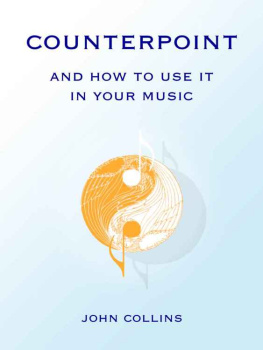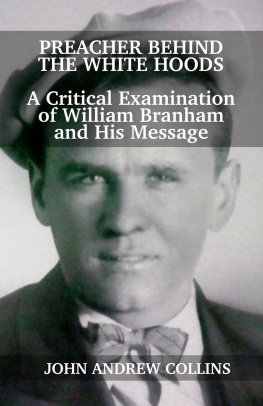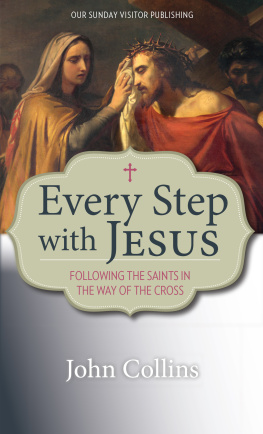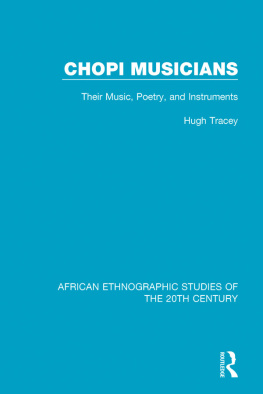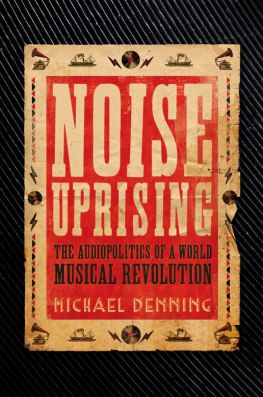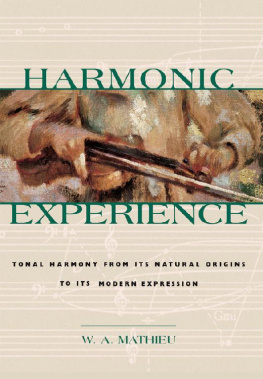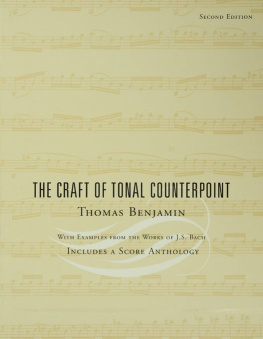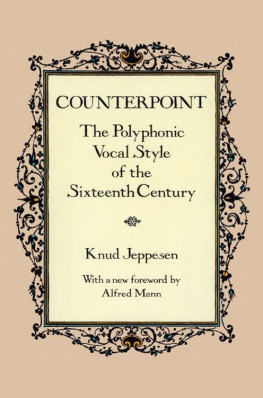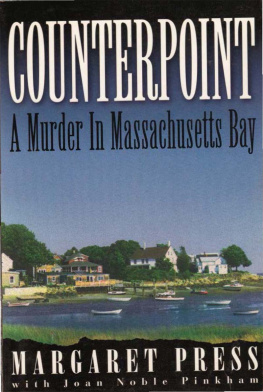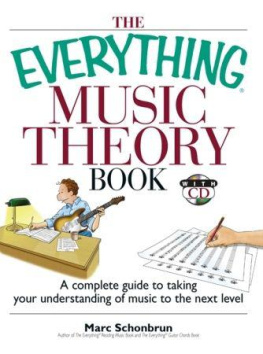
Counterpoint
and How to Use It
in Your Music
by John Collins
COUNTERPOINT AND HOW TO USE IT IN YOUR MUSIC. Copyright 2012 by John Collins. All rights reserved worldwide. No part of this publication may be reproduced in any form or by any electronic, mechanical, or digital means including information storage and retrieval systems without permission in writing from the publisher, except by a reviewer, who may quote brief passages in a review. Published by Echo Pier Publishing, New York City. Visit http://www.echopierpublishing.com.
Ordering Information: Quantity sales. Echo Pier publications may be purchased for educational, business, or sales promotional use. Special discounts are available on quantity purchases by schools, corporations, associations, and others. For details, contact the publisher at .
Library of Congress Control Number: 2011946172
Manufactured in the United States of America.
Tell Her I Said Hello by John Collins. Copyright 2012 by John Collins. All Rights Reserved.
Where Is My Love Now by John Collins. Copyright 2012 by John Collins. All Rights Reserved.
Hey Little Girl by John Collins. Copyright 2012 by John Collins. All Rights Reserved.
Blue Pigeons by John Collins. Copyright 2012 by John Collins. All Rights Reserved.
Sun Bell by John Collins. Copyright 2012 by John Collins. All Rights Reserved.
Visit Echo Pier Publishing
On Twitter at:
https://twitter.com/EchoPier
On Facebook at:
http://www.facebook.com/pages/Echo-Pier-Publishing/290264254343738
Visit John Collins
On Twitter at:
https://twitter.com/Jhn_Collins
On Facebook at:
http://www.facebook.com/pages/John-Collins/313421208679054
Contents
Dedication
This book is dedicated to Mary Lee Collins, who made it, as with everything else for me in this life (including this life itself), possible.
Preface
Counterpoint is an approach to musical composition based on the independence and interdependence of melodies. This book is intended primarily for musicians who would like to learn counterpoint for use in the making of their own music, whether they write contemporary pop songs or pieces for orchestral or traditional instruments. An attempt has been made to do justice to the art, while at the same time making it more accessible to musicians who aren't necessarily interested in counterpoint as a "style" of music, but who may be benefited by its principles and precepts, whatever style of music they make.
The basic format of this book is derived from Johann Joseph Fuxs Gradus ad Parnassum , the first major work on counterpoint to codify its tenets for a wide audience. It did so in a simple and systematic way that writers on the subject have emulated ever since, and which has now been adopted for use in the writing of this work.
It is hoped that your efforts here serve to enrich your life, and come to fruition in music that enriches the lives of others.
John Collins
Spring, 2012
The Use of an Instrument
with This Book
One of the benefits of learning musical counterpoint is that the process involved provides a natural form of ear training. In hearing notes, combinations of notes, and your own written compositions as they unfold, you become increasingly familiar with distinctions between various pitches, intervals, and harmonies. For that reason, it's recommended that you use an instrument while working on the compositional assignments of this book. Neglecting to do so deprives you, not only of ear training that you'd otherwise receive, but also of valuable insights that would come as a result of simply listening to and assessing your work.
The most straightforward type of instrument to use for learning counterpoint is a keyboard (piano, synthesizer, electronic keyboard, software keyboard, organ, etc.). Even if youve never played a keyboard before, it should be fairly easy to use one with this book. Alternatively, given the accessibility of multi-track recording gear and music recording software, there's the potential for use of any number of different instruments in learning counterpoint.
If, for example, you play a brass, woodwind, string, or tunable percussion instrument, and would prefer your own instrument to a keyboard for use with this book, you may be able to use multi-track recording equipment or computer recording software to accomplish this. These will enable you to record parts of a composition separatelyone individual melodic line, or section of it, at a timeand then listen back to all the parts playing together. Your instrument will need to have a wide enough range (at least, say, in the neighborhood of 2 octaves) to do the four-part compositions that you'll be assigned late in the book. However, if your instrument lacks sufficient range for writing in four parts, you may still be able to use it for writing in two or three parts, and opt for use of a keyboard or other instrument later on when writing in four.
Guitarists who'd prefer to use their guitar with this book can do so by using multi-track gear or software to record parts separately and combine them afterward. Those who can adapt to unaccustomed fingering positions may, to a limited extent, be able to use a guitar without need of recording gear, especially when writing in two parts. Some may even choose to create a few compositions that are written specifically for guitar. But for the basic purpose of learning counterpoint, the simplest option for guitarists, as for others, is use of a keyboard.
Since the principles of counterpoint were derived largely from the sound of the singing human voice, vocalists who would like to use their voices in doing the compositional assignments of this book may be able to do so with the use of recording software or equipment. In this case, it may also be helpful to have a keyboard or other instrument handy, to aid with any necessary locating, correcting, adjusting, or verifying of pitches. You may, if you like, choose to sing only certain of the compositional assignments, while working out others on an instrument. Or sing only one part of a given composition, and play the others on an instrument. Or, most straightforward of all, simply use a keyboard throughout.
A word on transpositions: Three musical keys are used in this course: the key of C major, the key of G major, and the key of A minor. If, because of the nature or range of your instrument, or because of your level of playing, it would be more convenient for you to do the compositional assignments in keys other than those indicated, or to do them an octave higher or lower, you should feel free to transpose the assignments accordingly.

Section I
The Preliminaries
Section I: Part One
Texture
There are three basic types of musical texture: monophonic , homophonic , and polyphonic .
Monophonic Texture
A monophonic texture consists of a single melodic line. Examples of this include plainsong, many Troubadour songs, and the ritualistic or liturgical chants of many people and cultures throughout the world.
Homophonic Texture
A homophonic texture consists of a single dominant melodic line, with accompaniment that performs an essentially harmonic function. Examples include pop music, jazz music, and some forms of classical music.
Polyphonic Texture
A polyphonic , or contrapuntal , texture consists of two or more melodic lines. This is the type of texture produced by counterpoint.
Next page
